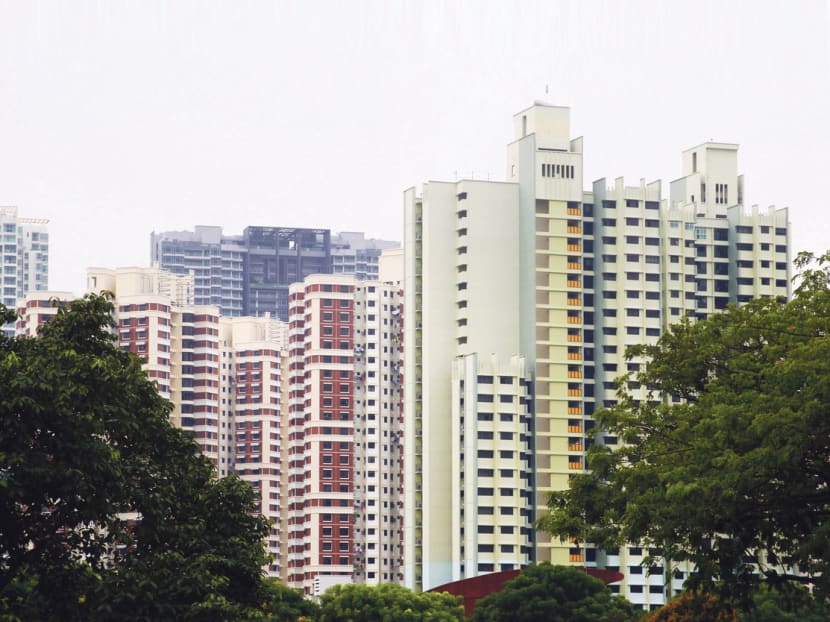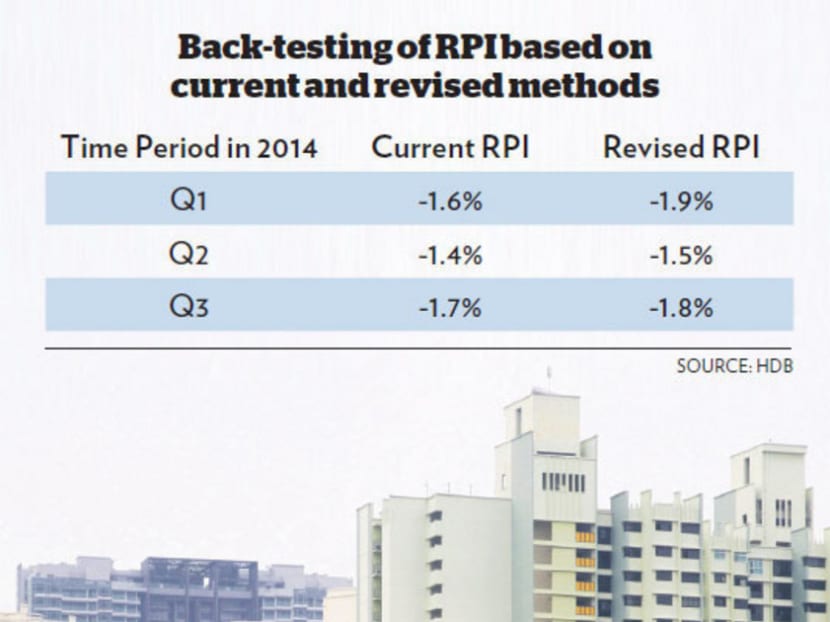HDB details new criteria for Resale Price Index
SINGAPORE — Following a one-year review, the Housing and Development Board (HDB) will be taking into consideration more attributes — ranging from the age of the flat and which floor it is on, to its proximity to amenities such as schools and MRT stations — in its computation of price changes for resale flats.
SINGAPORE — Following a one-year review, the Housing and Development Board (HDB) will be taking into consideration more attributes — ranging from the age of the flat and which floor it is on, to its proximity to amenities such as schools and MRT stations — in its computation of price changes for resale flats.
The HDB will implement the revised Resale Price Index (RPI) in flash estimates for the fourth quarter, which will be released next month, it said.
It announced details of the improved RPI yesterday, less than a week after National Development Minister Khaw Boon Wan said in a blog post that the current index may not adequately reflect the HDB resale market, given the significant changes in it.
Back-testing of the new methodology showed HDB resale prices fell by slightly more over the past three quarters. For example, the RPI would have fallen in the first quarter of this year by 1.9 per cent, compared with 1.6 per cent using the old approach.
“While the back-testing shows a bigger drop in the revised RPI, as compared to the current RPI, this need not be so all the time. The difference could be positive or negative, depending on the period considered,” said the HDB.
The new methodology was introduced due to an “increasing variety of resale flats with differing designs, new locations and greater variance in the age profile”. Besides introducing more attributes, the revised index will also capture price movements in all 26 HDB towns and estates, including those that had been left out of the representative basket used in the current model.
The 12 towns, including Bishan, Bukit Panjang, Bukit Timah, Punggol, Sembawang and Sengkang, had been excluded during the previous tweak to the RPI in April 2002, as they had a low volume of resale transactions or were non-existent then.
However, in recent years, transactions in these towns have grown to less than 30 per cent of total resale activity, said the HDB.
The method of aggregating price changes will also be improved. Currently, the HDB uses a 12-quarter moving average of transactions.
This will be replaced with five-quarter fixed weights. These fixed weights, which factor in the total value of transactions, will be updated every three years to reflect the prevailing market structure. Countries that use a similar methodology include Finland, France and Japan.
Apart from these improvements, the RPI will be calculated using the first quarter of 2009 as the new base period, instead of the currently used fourth quarter of 1998. The new base period was chosen because it was the most recent trough in the HDB resale market price cycle, based on the HDB’s analysis.
Mr Khaw had said the review of the RPI methodology — which the HDB had worked on with a consultant from the National University of Singapore’s Department of Real Estate — would better capture price changes over time and control for the variations in attributes of the resale flats transacted.
Several property analysts agreed that the revised RPI gave a more accurate picture of price movements in the market.
Mr Chris Koh, director of property firm Chris International, pointed to the limitations of the old methodology, which factored in transaction volume. “In the last quarter, there were many executive flats being sold. These are larger units with higher prices and that pushes the RPI up,” he said.
“Moving forward, it would make sense to revise the RPI because we might not get an accurate picture of the resale market as certain flats get older and newer flats enter the resale market.”
ERA Realty key executive officer Eugene Lim noted that the revised index will be useful for academics and analysts, to give them a more accurate representation of where the market is heading.
But he added: “To the layman, it does not really make a difference ... For pricing indication, most of them will be looking at the recent transaction information that the HDB publishes on its website.”
Citing the marginal change in price movements reflected in the back-testing, PropNex Realty chief executive officer Mohamed Ismail said he expects the revised RPI to show a greater dip in the coming quarters.
“This is mainly due to the fact that the newer properties in the non-mature estates have a weaker demand, and that, generally, will pull the prices overall down,” he said.








